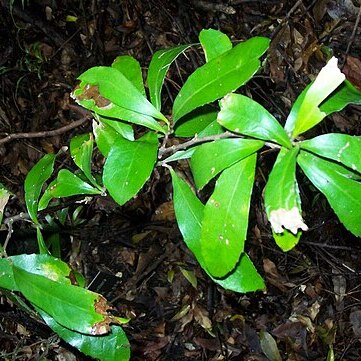A small tree. It grows 8-10 m high by 5-7 m wide. The crown is round and bushy. The small branches have rusty hairs. Young growth is bright green and shiny. The leaves are 5-16 cm long by 1.5-4.5 cm wide. They are oblong or sword shaped. They are stiff and dark green above but paler underneath. The flowers stalks are 4-10 cm long and in the axils of leaves. They are densely packed with flowers. The flowers are 1.2 cm long and pink or cream. The fruit is 1.2-1.5 cm long by 1-1.2 cm wide. It is oval and dark blue. It contains a single large seed.


